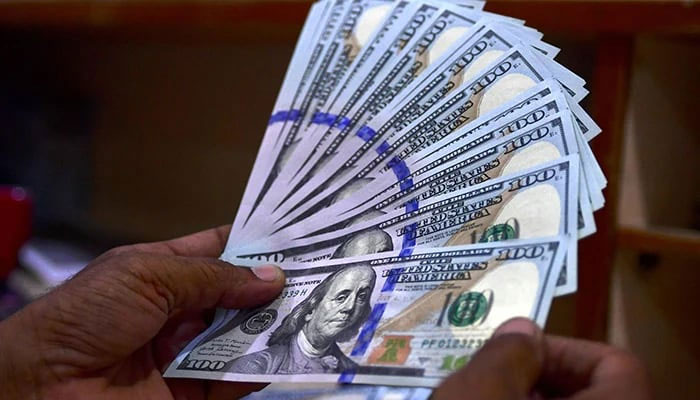Investment-GDP ratio falls to lowest since FY1973
The investment-to-GDP ratio stood at 12.8 per cent in the fiscal year 1972-3
ISLAMABAD: Pakistan’s total investment has declined to its lowest ebb since 1972-3 and now it stands at 13.1 per cent of GDP in the current fiscal year 2023-24 despite a deafening chorus of boosting up the investment climate through the Special Investment Facilitation Council (SIFC).
The investment-to-GDP ratio stood at 12.8 per cent in the fiscal year 1972-3, then it had remained on the higher side in all subsequent fiscal years since then and clinched highest-ever position of 26.2pc of GDP in 2001-2. In the fiscal year 2014-15, it stood at 17.2pc of GDP, and 17.1pc of GDP in 2017-18 during the tenure of PMLN. During the tenure of Imran Khan, the investment-to-GDP ratio stood at 15.6pc in 2021-22. It stood at 14.1pc of GDP in 2022-23 under the PDM-led government, but then it witnessed the lowest ebb and declined to 13.1pc of GDP in 2023-24.
On the other hand, the country’s economy experienced a low growth rate of 2.38pc compared to population growth of over 2.6pc, while inflation on an average ranges between 25pc and 26pc, portraying persistent stagflation over the last few years. However, the overall size of Pakistan’s economy in dollar terms had gone up to $373 billion in the current fiscal year 2023-24 against revised estimates of $338 billion for the last financial year.
According to provisional figures, approved by the National Accounts Committee (NAC), the per capita income has been worked out at $1,676 for the current fiscal year, while the Pakistan Bureau of Statistics (PBS) worked out per capita income in dollar terms at $1,680. There is a slight variation of $4, but the Ministry of Finance is expected to publish a figure of per capita income at $1,676 in the Economic Survey for 2023-24, going to be unveiled ahead of the upcoming budget for 2024-25.
The savings-to-GDP ratio remained constant at 13.1pc for the current fiscal year against 13pc for the last financial year. The import restriction helped the country to slash the current account deficit, which is estimated at 0.03pc of GDP, equivalent to remaining below $1 billion for the ongoing financial year.
On the investment-to-GDP ratio, total investment in percentage of GDP stood at 17pc in financial year 2017-18, but it continued to decline in subsequent years most of the years and now stood at 13.1pc for the outgoing financial year. Alarmingly, public investment declined from 3pc of GDP in the last fiscal year to 2.8pc of GDP in the outgoing fiscal year 2023-24. While the private sector investment stood at 8.7pc of GDP in the outgoing fiscal year against 9.5pc of GDP in the revised figures of the last financial year. The fixed investment also declined from 12.4pc of GDP in the last fiscal year to 11.4pc of GDP in the current fiscal year. The low investments and savings ratio in the percentage of GDP restricted the country’s ability to grow at a slower pace and achieved a provisional growth rate of just 2.38pc for the current fiscal year.
-
 Kanye West Eyes Performing First-ever Concert In India
Kanye West Eyes Performing First-ever Concert In India -
 Brooklyn Beckham's Claim About Nicola's Wedding Ordeal Gets Challenged
Brooklyn Beckham's Claim About Nicola's Wedding Ordeal Gets Challenged -
 AI Horror: 4 In 5 Young Workers Fear 'AI Could Replace Their Jobs', Says Report
AI Horror: 4 In 5 Young Workers Fear 'AI Could Replace Their Jobs', Says Report -
 Missouri Couple ‘locked Sons In Chicken Pen, Shot Them’ In Shocking Abuse Case
Missouri Couple ‘locked Sons In Chicken Pen, Shot Them’ In Shocking Abuse Case -
 King Charles Receives 'delightful' Royal Baby News
King Charles Receives 'delightful' Royal Baby News -
 Chinese ‘mega Embassy’ Wins UK Approval In London Ahead Of Starmer’s China Visit
Chinese ‘mega Embassy’ Wins UK Approval In London Ahead Of Starmer’s China Visit -
 David Beckham Gives Telling Reaction To Brooklyn’s Public Complaints
David Beckham Gives Telling Reaction To Brooklyn’s Public Complaints -
 Can Ibuprofen Cut Cancer Risks? Study Finds Promising Breakthrough
Can Ibuprofen Cut Cancer Risks? Study Finds Promising Breakthrough -
 Piers Morgan Finally Reacts To Brooklyn Beckham's Statement About David And Victoria Beckham
Piers Morgan Finally Reacts To Brooklyn Beckham's Statement About David And Victoria Beckham -
 Tom Hiddleston Reveals Unlikely DC Character That Inspired Loki
Tom Hiddleston Reveals Unlikely DC Character That Inspired Loki -
 Prince Harry, Meghan Markle Warned 2026 Will Be 'a Big Test' For Them
Prince Harry, Meghan Markle Warned 2026 Will Be 'a Big Test' For Them -
 OpenAI Plans First ChatGPT Device For 2026
OpenAI Plans First ChatGPT Device For 2026 -
 Matt Damon Gets Slammed Over 'out Of Touch' Comparison
Matt Damon Gets Slammed Over 'out Of Touch' Comparison -
 From Chagos Islands To Greenland Trump Flags National Security Risks: Here’s Why
From Chagos Islands To Greenland Trump Flags National Security Risks: Here’s Why -
 Meghan’s UK Return As ‘successful Businesswoman’ Will Put Pressure On Kate Middleton
Meghan’s UK Return As ‘successful Businesswoman’ Will Put Pressure On Kate Middleton -
 Spotify Tests Page Match To Sync Books With Audiobooks
Spotify Tests Page Match To Sync Books With Audiobooks




